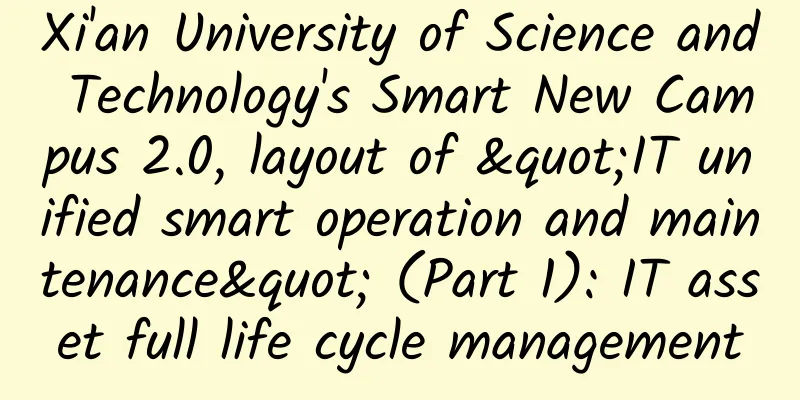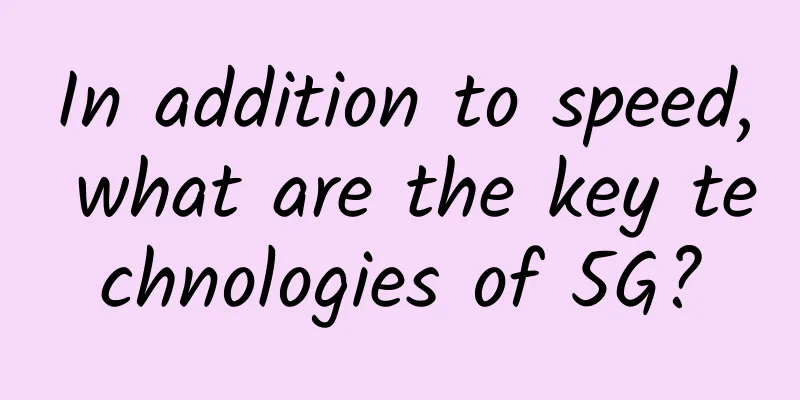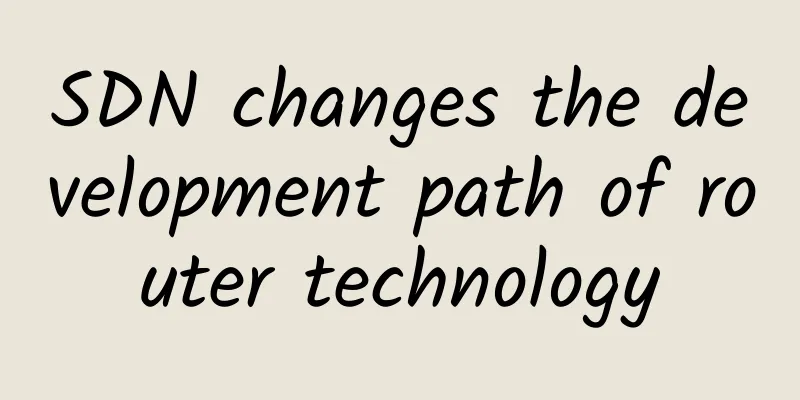Analysis of 5 promising 5G smart interconnection application industries

|
2019 saw the emergence of 5G commercial capabilities. In 2020, let’s take a look at how 5G will impact our lives, drive new innovations, and see where 5G is headed.
The era of intelligent interconnection has become a reality. As the core part of a powerful and flexible network, 5G networks will connect everything and everyone. This will enable more complex applications and technological changes, thus changing society. 5G brings a technological evolution and also a revolution. 5G Internet connection speed will be 20 times faster than 4G, and it will have the characteristics of low latency, low consumption, stronger access capability, greater flexibility and vitality. This will be a revolution because it will change the way people communicate, live, entertain and work, and most importantly, it will change the way enterprises manage their business. Smart connectivity will be the integrated development of 5G, AI and IoT, and is a means to accelerate technological development and realize new disruptive digital services. In the vision of smart connectivity, the digital information collected by the machines, devices and sensors that make up the IoT will be analyzed and contextualized by AI technology and presented to users in a more meaningful and useful way. This can not only improve decision-making, but also provide users with a personalized experience, making the interaction between people and their surroundings richer and more fulfilling. Thanks to advances in computing power, artificial intelligence is becoming increasingly sophisticated. Education and machine learning tools developed by data scientists can create advanced algorithms, and the Internet of Things is getting closer to entering the lives of ordinary people. 5G represents the missing element to take these technologies to the next level and realize the vision of intelligent connectivity. The ultra-fast, ultra-low latency connectivity provided by 5G networks, combined with the massive amounts of data collected by the Internet of Things and the contextualization and decision-making capabilities of artificial intelligence technology, will enable new transformative capabilities in almost every industry sector, which will have the potential to change our society and the way we live and work. Smart connectivity is expected to play an important role in five key areas: Transport and Logistics In the transportation sector, smart connectivity can improve road safety and efficiency, making traffic flow smoother, while in the logistics sector, smart connectivity has the potential to improve the efficiency and flexibility of goods delivery, making logistics faster and less expensive. The first is the AI-based driving assistance and traffic monitoring system. Using the low latency of the 5G network, road users and roadside infrastructure can collect and share a large amount of real-time information. For example, data such as the location and speed of vehicles, bicycles and pedestrians on the road, weather and road conditions, traffic congestion and other obstacles on the road. Then, the intelligent traffic monitoring system and the AI-based on-board computer will use this information to provide assistance to the driver. For example, helping them avoid accidents and collisions with other vehicles, or dynamically planning an excellent route to the destination. The second is self-driving cars. 5G and AI will eventually bring reliable self-driving cars. These vehicles will be equipped with an AI-based on-board computer, which can perceive the environment around the vehicle and adapt to any situation based on the data collected by on-board sensors and data provided by roadside equipment and other vehicles through the 5G network. Self-driving cars will also bring a new "mobile instant service" model, similar to the services we have today such as Didi, but it is a service tailored for driverless public transportation. The latter will eventually be cheaper than current public and private transportation methods because they can save time and money in training and paying drivers. Third, unmanned delivery. 5G networks will be able to support a large number of ground and air unmanned vehicles, such as unmanned delivery robots and drones, and allow operators to precisely coordinate their movements to avoid collisions with other unmanned vehicles, buildings, or other static obstacles along the way. For example, drones are already a very promising way to deliver goods quickly and safely. Drones are particularly convenient when the terminal location is complex terrain or congested roads, and they are less expensive than current human-based delivery systems. Industrial and Manufacturing Business In the industrial sector, smart connectivity will lead to increased productivity and reduced human errors through intelligent connections, while reducing costs and improving worker safety. By enabling remote operation of industrial facilities, smart connectivity can also reduce the need for on-site employees, thereby increasing flexibility in choosing the location of production facilities, as the latter will be independent of the geographical availability of skilled workers. In terms of factory automation and remote control of industrial robots, 5G's high data rates, ultra-low latency, and high reliability will improve the automation of industrial processes and the remote control of machines and robots. For example, machine learning algorithms can use data collected by sensors and cameras along the line to immediately alert operators to any inconsistencies in the process, or the system can automatically correct errors in real time. 5G will also enable human operators to monitor and adjust the movements of industrial robots from a distance and use tactile and visual feedback to enable real-time interaction through connected tools such as touch-sensitive gloves and virtual or augmented reality headsets. In the field of remote inspection and maintenance, as well as worker training, tactile Internet applications driven by intelligent connectivity can also enable tasks such as remote inspection, maintenance and repair. This will greatly reduce the cost and risk of operations in dangerous, inaccessible or inappropriate locations such as nuclear power plants, oil drilling platforms or mining sites. The same tools can also be used to perform or support worker training and simulate complex situations in a safe environment. Medical Smart connectivity will help deliver more effective medical care while enabling healthcare managers to optimize the use of resources. In addition, smart connectivity can facilitate remote diagnosis and enable remote surgery, potentially revolutionizing healthcare services that are currently limited to the geographic location of medical specialists. In the area of remote health monitoring and disease prevention, 5G's high availability and its support for massive connections are expected to help accelerate the adoption of wearable devices for monitoring different biometric parameters of the wearer. As these solutions become more popular, AI-based medical platforms will analyze the data collected from these devices to determine the patient's current health status, provide targeted health advice, and predict potential problems in the future. In addition, by having a more informed, real-time overview of the patient's medical status, medical managers can optimize the use of resources and ensure that their clinics always have enough medicines and medical tools and equipment. In terms of remote diagnosis and medical operations, the tactile characteristics of intelligent connected Internet applications provided by the high speed, low latency and ultra-high reliability of 5G networks will enable doctors to provide complete medical examinations with audio-visual and tactile feedback at a distance, making it possible for doctors to provide diagnosis anytime and anywhere. With 5G and the Internet of Things, doctors can even perform remote surgery by operating professional robots through the 5G network. Public Safety and Security Intelligent connectivity has the potential to make cities safer and help security services combat crime by making video surveillance, security systems and emergency services more efficient while reducing their costs. Smart video surveillance and security systems. 5G networks will facilitate the deployment of massive numbers of security alarms, sensors, and cameras, and enable real-time, high-quality video transmission to enhance remote monitoring and better assess crime scenes. Among other things, AI-based systems will automatically analyze suspects’ movements, body language, and facial expressions to automatically detect criminal behavior and find criminals at crime scenes. Tracking suspicious individuals, such as as they move within the line of sight of different cameras. In addition, by analyzing past crime data, AI-based platforms will be able to predict future crimes and help optimize the use of crime prevention resources. Emergency services and border control. Large numbers of 5G-connected cameras, whether fixed, mounted on moving vehicles, worn on the body, or mounted on drones, will help control and coordinate emergency services operations. Remotely controlled or autonomous robots will replace humans in dangerous environments, such as searching for survivors in collapsed or burned buildings. Drones will be used to survey disaster areas or patrol coastlines and mountains to detect smugglers and other uninvited visitors. Other departments In addition to the applications mentioned above, intelligent connectivity can also enable innovation in many other contexts. For example, virtual personal assistants can be further empowered through the combination of 5G and AI, making it faster and more convenient for virtual personal assistants to retrieve information, make reservations or purchase goods. Secondly, cloud-based gaming servers allow players to enjoy video games without the need for bulky and expensive equipment, making the experience more immersive through the use of AR/VR masks and devices with haptic feedback. Third, 3D holographic displays can allow users to experience the live feeling of sports or music events from a long distance, while sitting comfortably at home or nearby in a device specially equipped for it, and also feel the realistic sports or music events. In addition, AI capabilities combined with the massive capacity of 5G networks will further enhance the real-time data collection and analysis capabilities of sensor networks, making us more efficient in using energy, irrigating fields, or distributing goods, while reducing waste and pollution. There are also some obstacles for 5G to turn from vision into reality The applications mentioned above are good examples of what is possible with the concept of smart connectivity, but they are not yet widespread, and it is too early to declare that the era of smart connectivity has arrived. Technically, despite the exciting developments in the mobile industry, the elements needed to realize this vision have not yet reached maturity. Applications involving VR/AR, touch-enabled Internet or self-driving cars are still in the early stages of development, and there are many technical and regulatory issues that need to be resolved, which will take at least another 5 to 10 years. 5G is still in its early deployment stages, but mobile operators have made rapid progress in the development and testing of 5G technology over the past few years, and 3GPP Release 16 is expected to complete the standardization process in 2020. Only after this, the industry will begin to see that 5G networks can truly deliver the performance improvements promised by the technology. The main challenge in turning 5G from a vision into reality is to ensure that the smart connectivity technologies meet the actual needs of industry and society. Reaching this level of technological maturity is not the main issue here. Technically, the industry will eventually reach it. The real challenge is to ensure that these smart connectivity technologies meet the actual needs of industry and society. Technology providers often tend to push technology aggressively without properly assessing the actual needs. The risk of doing so is that no one is really ready to embrace it. There is no doubt that 5G will improve almost every industry. However, operators have realized that there is no compelling business case to motivate the huge investment required to build infrastructure, especially in terms of ultra-low latency and massive connections. This does not mean that no one needs it, but the expected returns in productivity, efficiency and profit are not enough to justify its cost. Therefore, the 5G industry still needs to mature when it comes to determining the actual needs of users. In the short term, operators regard the media and entertainment industry as the main commercial application of 5G. Consumers want more bandwidth and higher speeds so that they can watch online videos and make video calls anytime, anywhere. This application is simpler and easier to sell. Secondly, the automotive field seems to be quite promising. At present, the ecosystem of connected cars is quite mature, new consumer-oriented services have emerged, and people are willing to spend money on it. But outside of these two areas, the commercial application of 5G seems uncertain. We still have a lot of work to do before we can enter the era of intelligent connectivity. The technology must mature, the policies must be improved, and a lot of money needs to be spent. However, if all parties can unite and work together towards this common goal, we will eventually achieve the era of intelligent connectivity. |
<<: Should operators delay 5G deployment plans until 2021?
>>: The era of ubiquitous smart devices and edge computing is coming
Recommend
CAICT's first batch of AIOps systems and tools evaluations, Borui Data was rated "comprehensive" for anomaly detection module
Recently, Swift-AI, the intelligent operation and...
10gbiz: Hong Kong CN2 GIA/Los Angeles CN2 GIA VPS 50% off, starting from $3.44/month
A friend asked about the discounts of 10gbiz this...
The number of 5G mobile phone terminal connections of the three major operators reached 260 million, accounting for 16.3% of mobile phone users
Recently, the Ministry of Industry and Informatio...
Microsoft announces that US operator AT&T's 5G mobile network business will be migrated to Azure cloud service
Microsoft announced today that US telecom operato...
Wi-Fi 7: What is it and when can you expect it to arrive?
[[380191]] Wi-Fi 7 is expected to have higher dat...
Virtono: €23.7/year KVM-2GB/25GB/2TB/Los Angeles & Dallas & New York & Romania, etc.
Virtono recently launched a summer promotion, off...
HostKvm: Hong Kong CTG bandwidth/traffic upgrade 20% off $7.6/month-2G memory/40G hard disk/30M bandwidth
HostKvm has upgraded the bandwidth and traffic of...
An article on learning Go network library Gnet analysis
Introduction We analyzed the Go native network mo...
How to promote 5G packages in small and medium-sized cities
From the perspective of package value, the curren...
In addition to base stations, what else should major cities pay attention to in 5G construction?
It has been a year since 5G was officially put in...
Shenzhen OCT InterContinental Hotel, Shenzhen Telecom, and Huawei jointly launched the world's first 5G smart hotel construction
InterContinental Hotel Shenzhen OCT, Shenzhen Tel...
Riverbed Retail Digital Transformation Survey Results: The Next Three Years Will Be Critical for the Development of Physical Stores
The retail industry was born along with human civ...
How can IT operation and maintenance service providers keep WannaCry out? Hengyuan Zhicheng said that security needs to be prevented
[51CTO.com original article] It has been a week s...
Will the next 5G data package be an “unlimited data package”?
In the past two years, 4G unlimited data packages...
What exactly does the Communications Design Institute do?
Speaking of the Communications Design Institute, ...









